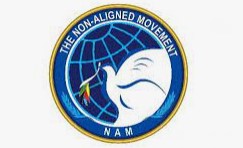
1. Formation: The Non-Aligned Movement was founded in 1961 during the Cold War era. The movement emerged as a response to the prevailing global power dynamics between the two superpowers at the time, the United States and the Soviet Union.
2. Principles: The NAM is based on a set of principles that include respect for sovereignty and territorial integrity, non-aggression, non-interference in the internal affairs of other countries, and peaceful coexistence. The movement advocates for the rights of developing countries and aims to promote their interests on the international stage.
3. Membership: The Non-Aligned Movement consists of 120 member states, as of my knowledge cutoff in September 2021. These member countries come from various regions across the world and have diverse political, economic, and cultural backgrounds. Notably, some countries with significant geopolitical importance, such as India, Egypt, Indonesia, Nigeria, and Venezuela, are members of the NAM.
4. Summit Meetings: The NAM holds periodic summit meetings where member countries gather to discuss common issues and challenges. These summits provide a platform for member states to exchange views, coordinate positions, and strengthen cooperation. The NAM Summit is held every few years, with the host country assuming the role of the movement's chairmanship until the next summit.
5. Objectives: The Non-Aligned Movement aims to promote and uphold the principles of independence, national sovereignty, and non-alignment. It seeks to foster international peace, disarmament, and the peaceful resolution of conflicts. The movement advocates for economic cooperation, development, and the establishment of a more just and equitable international order.
6. Positions on Global Issues: The NAM has historically taken stances on various global issues. It has advocated for the decolonization of territories, supported self-determination for peoples under colonial rule, and called for an end to apartheid in South Africa. The NAM has also expressed concerns about nuclear weapons proliferation, disarmament, human rights, poverty, and sustainable development.
7. Role in International Relations: The Non-Aligned Movement has sought to promote the interests of its member countries on the global stage. It has engaged in multilateral diplomacy, participated in international forums such as the United Nations, and collaborated with other regional organizations to advance common objectives. The movement has also contributed to shaping the agenda of international relations and has been involved in conflict resolution efforts in different parts of the world.










